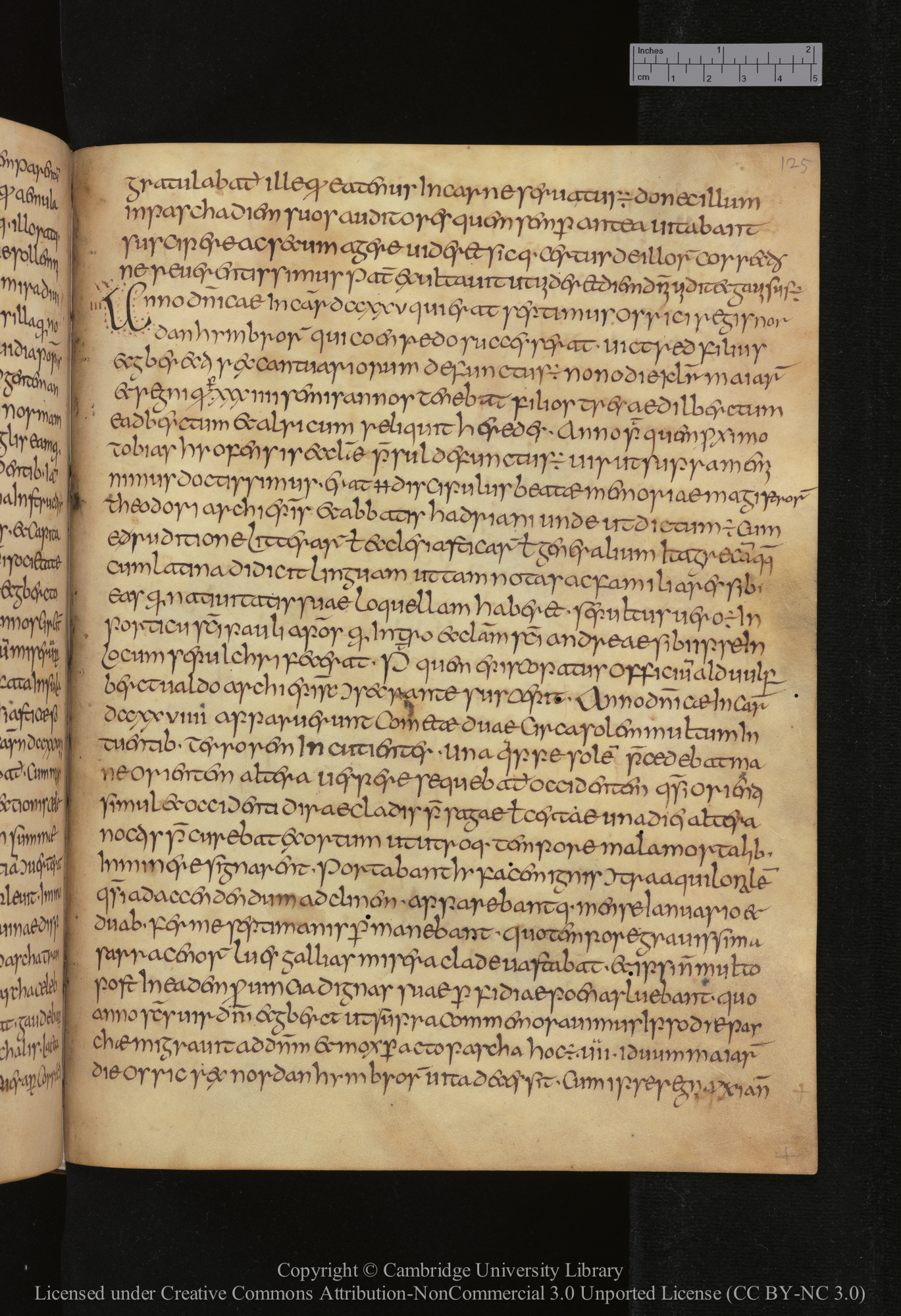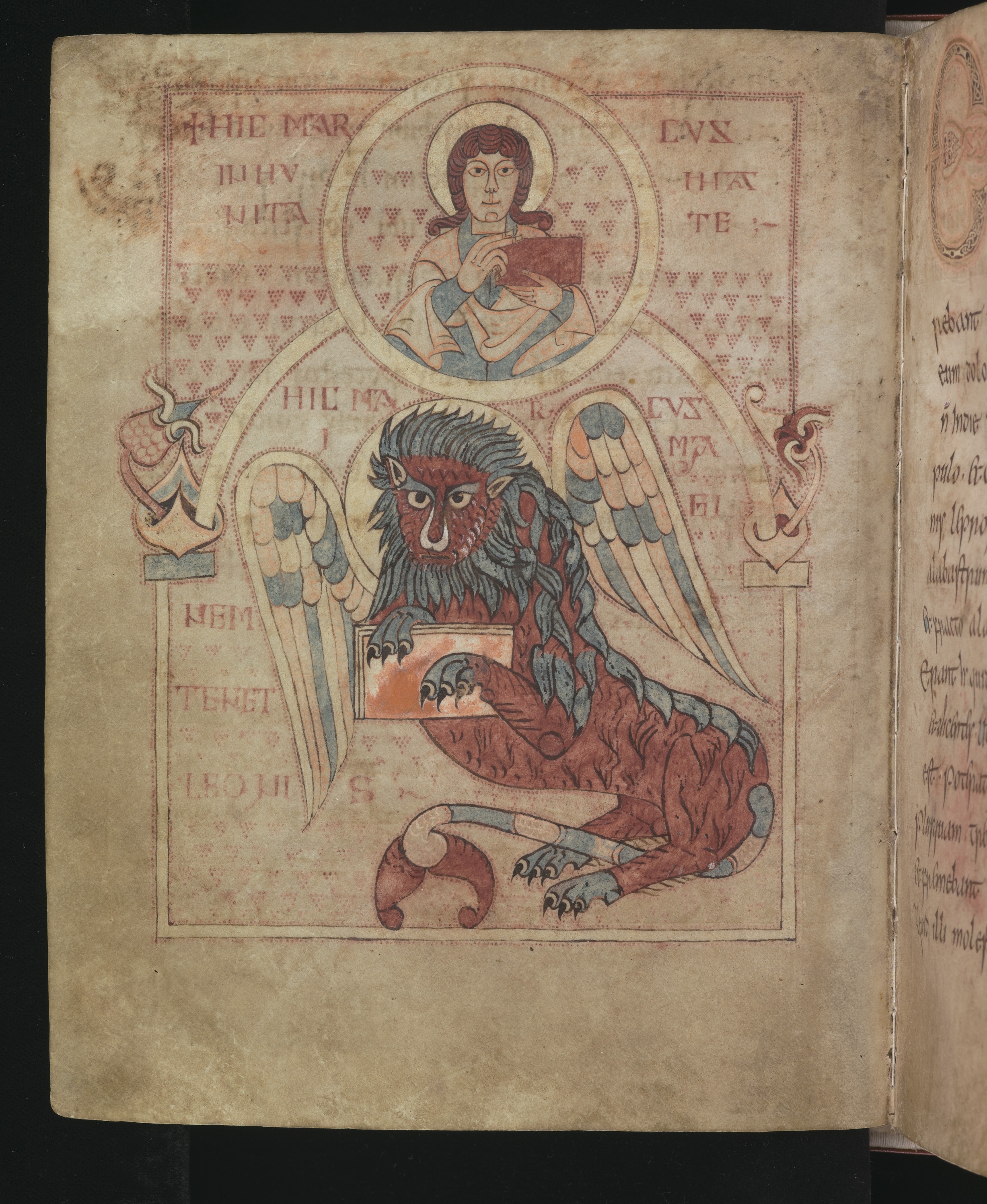
Two of Cambridge University Library’s most precious medieval manuscripts are now on public display as part of the British Library’s exhibition, Anglo-Saxon Kingdoms: Art, Word, War (19 October 2018-19 February 2019). The ‘Moore Bede’ and the ‘Book of Cerne’ join manuscripts and artefacts from collections across the world for what promises to be a once-in-a-lifetime opportunity to see the products of a vibrant and active culture that spanned six centuries, and which was both distinct from but intimately connected with that of its mainland Continental and Celtic neighbours.
The first of the University Library’s loans is the earliest datable copy of Bede’s Historia ecclesiastica, made at the author’s home monastery of Wearmouth-Jarrow within a few years of his death in 735. Annotations in the manuscript place it firmly at the court of the Emperor Charlemagne at Aachen from the beginning of the 9th century. Copied neatly but hurriedly, this manuscript may have been an early attempt to circulate Bede’s writings more widely and cement his intellectual and religious reputation.
About the manuscript, Mark Purcell, Deputy Director for Research Collections at the University Library, said: “The Moore Bede is one of the most important manuscripts of the very first English history. It is one of the University’s most precious possessions, and we are absolutely thrilled to see it on display in the British Library’s spectacular new exhibition.”
The manuscript spent close to a thousand years in circulation throughout Continental Europe, before its purchase by John Moore, Bishop of Ely, around 1700 – hence its epithet. It came to the University Library in 1715 via the gift of George I, who purchased Moore’s library en bloc after Moore’s death in 1714.
 The second loan is a beautifully decorated devotional manuscript known as the ‘Book of Cerne’. Its name arises from the inclusion of later medieval documents at the beginning and end that relate to the Benedictine monastery of Cerne in Dorset. However, these may have been added to the manuscript after the end of the medieval period, and there is no evidence elsewhere to suggest the manuscript was ever at Cerne.
The second loan is a beautifully decorated devotional manuscript known as the ‘Book of Cerne’. Its name arises from the inclusion of later medieval documents at the beginning and end that relate to the Benedictine monastery of Cerne in Dorset. However, these may have been added to the manuscript after the end of the medieval period, and there is no evidence elsewhere to suggest the manuscript was ever at Cerne.
On the contrary, the manuscript was originally from the Anglo-Saxon kingdom of Mercia. It is thought to have been made for Aethlwald, Bishop of Lichfield 818-830: an unusual acrostic poem, written in coloured inks, spells out his name. At its core, the manuscript contains narratives extracted from each of the Gospels concerning the Passion and Resurrection, each prefaced by a full-page miniature of an Evangelist and his symbol. There are also prayers in Old English and Latin, some with Old English glosses, illustrating the use of both the official language of worship and the vernacular side-by-side at the highest levels in the pre-Conquest church.
For more information about the exhibition, visit the British Library website.
